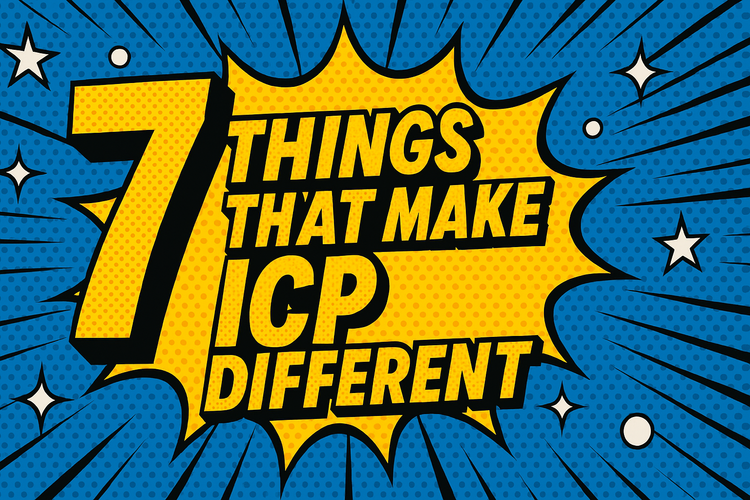From Zero-Knowledge to ICP: How Jan's Paper Quietly Set the Stage for the ICP

Before the blockchain. Before canisters. Before the Network Nervous System (NNS) had a name that sounded like it belonged in a 1980s anime...
There was a paper.
Published in Eurocrypt 2001, it was called:
"An Efficient System for Non-Transferable Anonymous Credentials with Optional Anonymity Revocation"
Written by Jan Camenisch and Anna Lysyanskaya, this wasn’t your average ivory tower crypto theory. It was a blueprint for digital identity in a world that wants both privacy and accountability.
Sound familiar, Web3?
Let’s unpack what made this paper a quiet revolution — and why it may have been Jan’s warm-up before Internet Computer.
Credentials... But Make Them Private
At its core, the paper solves a sticky digital problem:
"How can someone prove they’re authorized without revealing who they are?"
Think of it like showing your age at a bar with a magic ID that says “Over 21”… but without showing your name, photo, or address.
The Camenisch-Lysyanskaya system (later foundational for IBM’s Idemix project) lets you:
- Prove facts about your identity without revealing it
- Prevent others from copying or transferring your credential
- Enable optional revocation (i.e., boot the bad guys if needed)
This wasn’t just theory — it was efficient, practical, and modular. It ran on minimal assumptions and avoided the bloat of heavyweight cryptosystems.
It even supported selective disclosure. You could prove you were a verified member of a DAO without revealing your wallet address or voting history.
It’s a system designed for the messy, real-world scenarios that Web3 keeps running into—but designed back when flip phones were still cool.
Fast Forward to ICP
Now jump two decades.
Jan Camenisch is the CTO and cryptographic wizard at DFINITY, the creators of the Internet Computer Protocol (ICP).
And guess what problems ICP solves?
- Decentralized identity
- Anonymous (but auditable) participation
- Smart contract governance via NNS
ICP takes all the old questions and gives them modern infrastructure:
- How do you trust actions on-chain without knowing who's behind them?
- How do you enable governance without turning into a surveillance state?
Many of the cryptographic principles from that 2001 paper live on today in ICP's structure. Whether it's threshold cryptography, chain key signatures, or the careful balance between transparency and privacy… Jan’s early research is all over it.
Even the concept of non-transferable credentials shows up in ICP voting neurons—they’re not just tokens you can trade, they’re tied to participation.
You could even argue:
"If Bitcoin is the child of ‘How to Timestamp a Document,’ then ICP might be the grown-up version of Anonymous Credentials."
Why This Paper Still Slaps
In 2025, we’re dealing with:
- Governments proposing digital IDs
- Blockchains struggling with identity layer fragmentation
- Apps that need user data without storing that user data
And yet, the solution was chilling in a Springer publication from 2001.
Jan wasn’t just predicting the future. He was engineering it. This paper didn’t just get cited—it got built on. IBM’s Idemix, Microsoft’s U-Prove, EU identity pilots—they all stand on its shoulders.
And now, ICP is taking those same ideas to the protocol layer. It’s like Web3 got a cryptographic adult in the room.
TL;DR
If you’re into:
- Zero-knowledge proofs
- Self-sovereign identity
- The deeper philosophy of "private yet provable" internet
...then this paper is worth a read.
And if you’re building on ICP? Consider it required reading.
From zk to ICP, Jan’s been playing the long game.
Stay Notoko...
💡 Subscribe to Notoko Bytes for more crypto chaos straight to your inbox! 🚀

Want to feature your brand on Notoko Bytes? 🚀 Contact us at ctrascend@gmail.com for sponsored posts or just share your thoughts!
Disclaimer
*The information and analysis provided in this article are intended for educational and informational purposes only and should not be considered as financial, investment, or professional advice. While our team strives to ensure the accuracy and reliability of the content, we make no representations or warranties of any kind, express or implied, about the completeness, accuracy, reliability, suitability, or availability of the information presented.
The content within this article may include opinions and forward-looking statements that involve risks and uncertainties. The blockchain and cryptocurrency markets are highly volatile, and past performance is not indicative of future results. Any reliance you place on the information presented is strictly at your own risk. Before making any investment decisions, we highly recommend consulting with a qualified financial advisor or conducting your own thorough research.
By accessing and using the information provided in this article, you acknowledge and agree that neither the authors, publishers, nor any other party involved in the creation or delivery of the content shall be held liable for any direct, indirect, incidental, consequential, or punitive damages, including but not limited to loss of profits, goodwill, or data, arising out of your use or inability to use the information provided or any actions you take based on the information contained within this section.*





